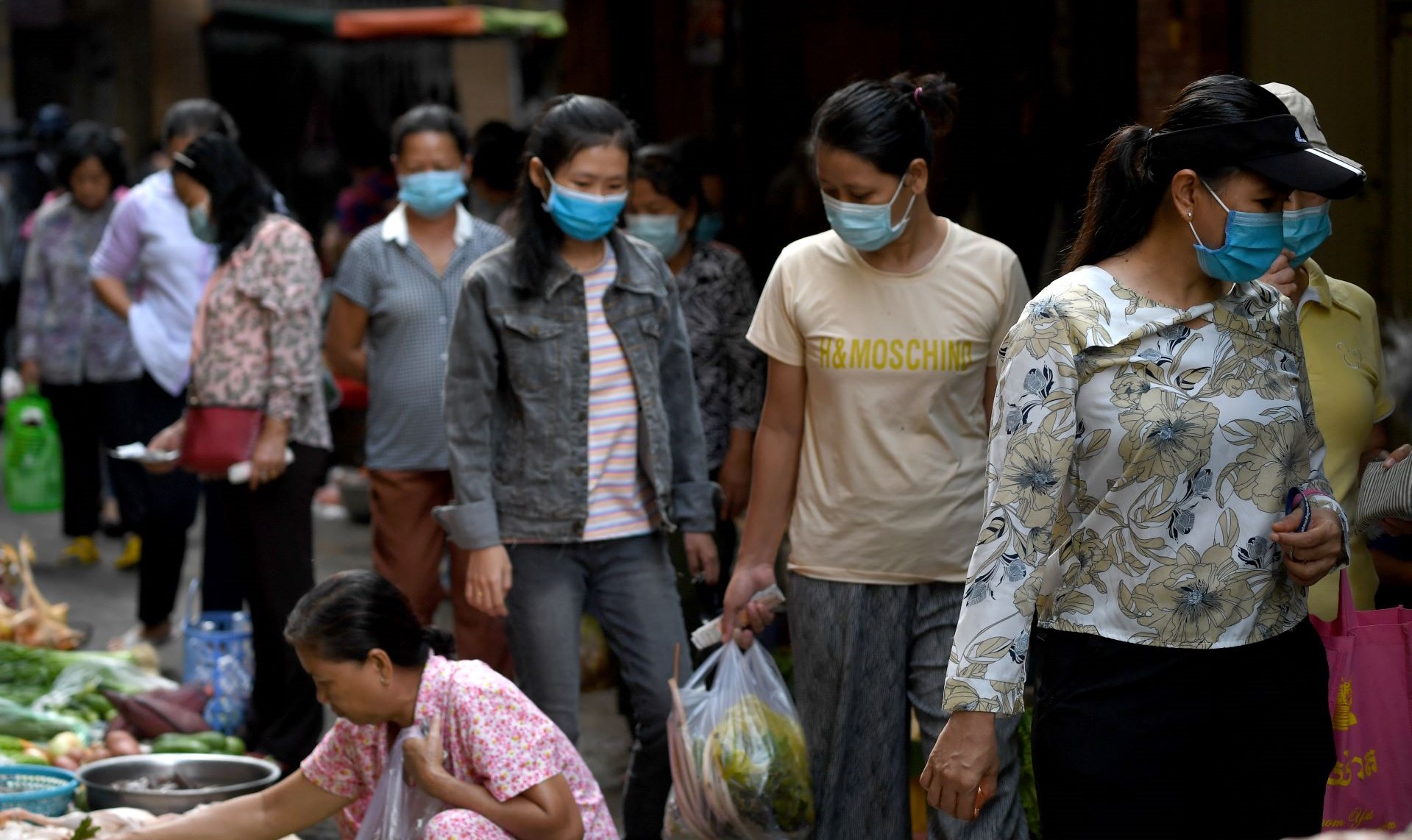The coronavirus disease (COVID-19) pandemic led to the global implementation of measures to reduce COVID-19 virus transmission. This affected other communicable diseases including influenza, whose circulation decreased worldwide in 2020. In Cambodia, fewer influenza cases were detected while COVID-19 restrictions were in place. The country experienced outbreaks of influenza from June 2020, after the Ministry of Health began to ease COVID-19 restrictions. This highlighted the importance of active surveillance systems for a broad spectrum of infectious respiratory diseases.1
Cambodia’s Master Plan for COVID-19 emphasizes strengthening local preparedness for any new outbreaks of COVID-19, influenza, or other respiratory diseases. WHO, with the support of health partners including the European Union, provided technical and operational support to the Ministry of Health, including through the Pandemic Influenza Preparedness Framework Partnership Contribution,2 to deliver a package of activities at the provincial level. Activities were designed to strengthen local capacities for surveillance, risk assessment and rapid response, and have been delivered in all 25 provinces. This puts Cambodia on the path to achieving strong provincial surveillance capabilities, which will help to ensure effective operational and strategic decision-making during the ongoing or in any future pandemic.

Cambodians taking protective COVID-19 measures at a market. © WHO Cambodia
How did Cambodia, with the support of the WHO Secretariat, achieve this?
- Training and coaching in multisource surveillance: WHO Country Office experts conducted training sessions on surveillance concepts and the use of surveillance data. This enabled national and provincial focal points across the country to analyse multiple sources of information to monitor disease trends and elicit an appropriate response.
- Webinars on the use of risk assessment within an incident management system: WHO Country Office experts conducted 12 incident management system webinars to boost capacity at the provincial level and enable provincial health leaders to recognize the value of using risk assessments to inform decision-making. As a result, the country now aims to transition from nationally to provincially led risk assessments. This will better enable multilevel planning and decision-making in Cambodia.
- Simulation exercises in contact tracing: WHO experts conducted 16 simulation exercises with the Ministry of Health, provincial health departments, representatives from relevant sectors and the local authorities. As part of the simulation exercises, which took a multisource approach to rapid response, participants were tasked with going into the field to investigate cases, trace contacts and obtain health centre data. Provinces reflected that the exercises greatly enhanced cross-sectoral collaboration for contact tracing between health and non-health sectors and strengthened the country’s whole-of-society approach to pandemic response.
- Intra-action reviews: Using WHO guidance materials, WHO Country Office technical experts guided the COVID-19 intra-action reviews (IARs)3 to enable reflection on Cambodia’s local COVID-19 response in all 25 provinces. Representatives from non-health sectors, for example the police and local authorities, participated in the multisectoral IARs alongside health professionals. Provincial IAR findings will feed into a broader national IAR. The national IAR aims to identify key challenges and recommendations to inform the next National Action Plan for Emerging Diseases and Public Health Emergencies. The National Workplan will be used to guide workplans at the provincial level.
Strong government leadership at the national and subnational levels has been crucial for strengthening local preparedness for influenza and COVID-19 in Cambodia: public health and social measures were designed to empower the community at the local level using participatory methodology, and strong leadership enabled decisive action to be taken for implementation. Experience gained while implementing local preparedness activities in Cambodia suggests that provincial capacities are best developed one step at a time: methods included follow-up meetings, and regular on-site coaching enabled confidence and capability to be built over time.
1 Sovann LY et al. An influenza A (H3N2) virus outbreak in the Kingdom of Cambodia during the COVID-19 pandemic of 2020. Int J Infect Dis. Feb 2021;103:352–7. doi:10.1016/j.ijid.2020.11.178.
2 PIP Framework Partnership Contribution [website]. Geneva: World Health Organization; 2022 (https://www.who.int/initiatives/pandemic-influenzapreparedness-framework/partnership-contribution, accessed 19 August 2022).
3 Intra-action review (IAR) [website]. Geneva: World Health Organization; 2022 (https:// extranet.who.int/sph/intra-action-review, accessed 19 August 2022).




